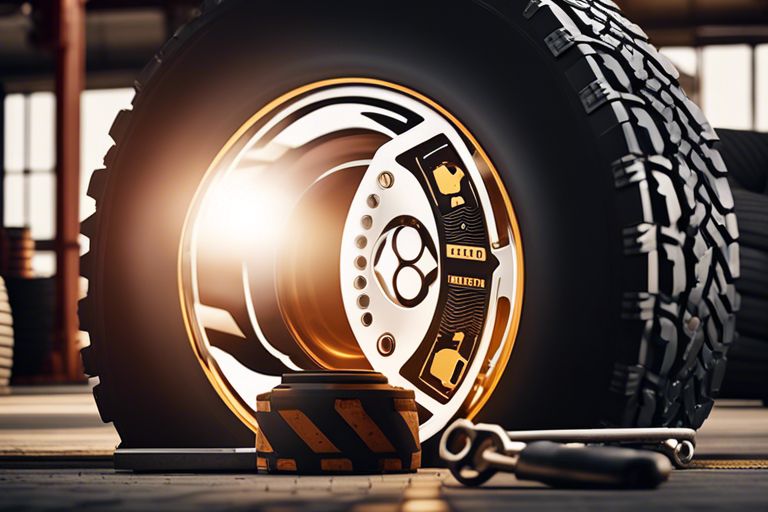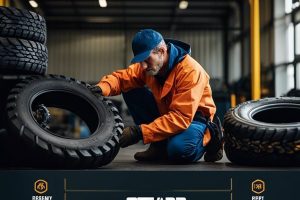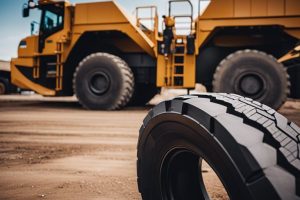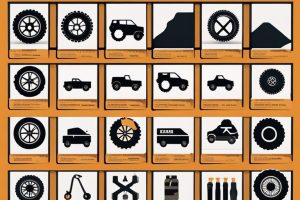Maintaining the life of Off-The-Road (OTR) tires is critical to the efficiency and safety of heavy equipment used in industries such as construction and mining. Expert maintenance practices can dramatic extend the life of these specialized tires, ultimately saving you both time and money. From proper inflation and routine inspections to alignment checks and timely repairs, after a careful The maintenance schedule is critical to ensure OTR tires perform optimally and withstand the demanding conditions in which they operate. This guide delves into crucial maintenance tips that will help you maximize the durability and life of your OTR tires, keeping your operations running smoothly and safely.
Key learning points:
- Regular inspections: Perform regular inspections of OTR tires to look for signs of wear and damage.
- Correct inflation: Maintaining the correct tire pressure is critical to extending the life of OTR tires.
- Rotation and alignment: Rotate and align OTR tires regularly to ensure even wear and optimal performance.
Understanding OTR Bands
All heavy machinery in industries such as construction, mining or agriculture rely on Off-The-Road (OTR) tires to ensure optimal performance on rough terrain. Understanding the anatomy and common causes of wear and failure of these specialized tires is necessary to maximize their life and efficiency.
Anatomy of an OTR band
To understand the complexity of OTR tires, one must dissect their structure. An OTR tire consists of several layers, including the tread, belts, sidewall, inner liner and bead. Each part plays a crucial role in providing stability, traction and load-bearing capacity under tough working conditions. The tread is the outer layer that comes in direct contact with the ground and is designed with patterns that improve grip and reduce wear.
Inside the tire, the belts consist of layers of steel or fabric cords that strengthen the structure, prevent punctures and promote stiffness. The sidewall supports the tire against lateral forces, while the inner liner serves as a seal to maintain proper air pressure. Finally, the bead anchors the tire to the rim, ensuring secure installation.
Common causes of wear and failure of OTR tires
For heavy vehicles operating in demanding environments, common causes of wear and failure of OTR tires include factors such as overload, under inflation, improper alignment and rough terrain. Overloading puts excessive pressure on the tires, leading to accelerated wear and possible tire blowouts. Underinflated tires cause greater flexion of the sidewalls, causing heat build-up and shortening the overall life of the tire.
Improper alignment results in uneven wear patterns, which affects traction and stability. Additionally, navigating rough terrain with sharp rocks, debris, and extreme temperatures can lead to cuts, punctures, and abrasions in the tire surface, compromising its integrity. Regular inspections and maintenance routines are critical to quickly identify and address these issues and extend the life of OTR tires.
Tires in optimal condition contribute to improved safety, operational efficiency and cost-effectiveness in heavy-duty applications. By understanding the anatomy of OTR tires and recognizing the common causes of wear and failure, operators can implement proactive maintenance strategies to reduce risk and ensure peak performance from their tire investments.
Maintenance tips for a longer tire life
The key to expanding the lifespan of your OTR (Off-the-Road) tires are well maintained. By following expert advice and carrying out regular inspections, you can ensure that your tires last longer, saving you time and money in the long run.
Regular inspections and what to look out for
Life begins with regular inspections of your OTR tires. Look for signs of uneven wear, cuts, punctures or other damage that could compromise the integrity of the tire. Be sure to check tire pressure and tread depth regularly to prevent premature wear and possible tire blowouts. Any problems found should be addressed immediately by a professional to prevent further damage.
Proper tire maintenance also includes alignment and rotation to ensure even wear on all tires. Keep an eye on things Weird objects stuck in the steps and remove them immediately to avoid punctures. Keep in mind that a proactive approach to tire maintenance can considerable extend the life of your earth-moving tires.
Correct tire pressure and its impact on tire life
For lifespanit is crucial that the tires are properly inflated. Too low tire pressure can lead to increased heat build-up, causing internal damage and shortening the life of the tire. Over-inflated tires, on the other hand, are more prone to punctures and uneven wear. It is essential to follow the manufacturer's recommendations for tire pressure and check it regularly to ensure optimal performance.
Thou, good tire pressure not only prolongs the lifespan of your OTR tires, but also improves fuel economy and overall safety. Taking the time to properly inflate your tires can prevent unnecessary wear and tear, saving you time and money in the long run.
Advanced care strategies
All OTR tires require regular maintenance to ensure long life and optimal performance. Here are some advanced maintenance strategies to extend the life of your OTR tires:
-
- Rotational and retreading methods
| Rotation | Renewal |
| Rotate tires regularly to promote even wear and extend tread life. | Consider retreading worn tires to extend their life and reduce costs. |
-
- Address environmental factors and operating conditions
| Environmental factors | Operating conditions |
| Avoid prolonged exposure to sunlight and extreme temperatures. | Check tire pressure and adjust based on load and speed. |
| Keep tires clean and free of debris to prevent damage and deterioration. | Avoid overloading vehicles to prevent excessive pressure on the tires. |
Rotational and retreading methods
Advanced maintenance strategies for OTR tires include implementing regular rotation schedules and considering renewal options. Rotating tires at specified intervals evenly distributes wear, extending the life of the tire tread. Additionally, retreading worn tires can be a cost-effective way to increase their serviceability, especially for tires with significant residual casing integrity.
Address environmental factors and operating conditions
Advanced maintenance techniques for OTR tires include addressing environmental factors such as exposure to bright sunlight and extreme temperatures. It is critical to protect tires from these elements to prevent premature aging and deterioration. Additionally, monitoring and adjusting tire pressure based on operating conditions, including load and speed, can optimize tire performance and life.
- Environmental factors: Avoid prolonged exposure to sunlight and extreme temperatures. Keep the tires clean and free of dirt.
- Operating conditions: Check and adjust tire pressure based on load and speed. Avoid overloading vehicles to avoid strain on the tires.
For example, maintaining optimal tire pressure is crucial to prevent irregular wear patterns and ensure good traction on different terrains. By proactively taking environmental factors and operating conditions into account, operators can significantly improve the durability and performance of their OTR tires.
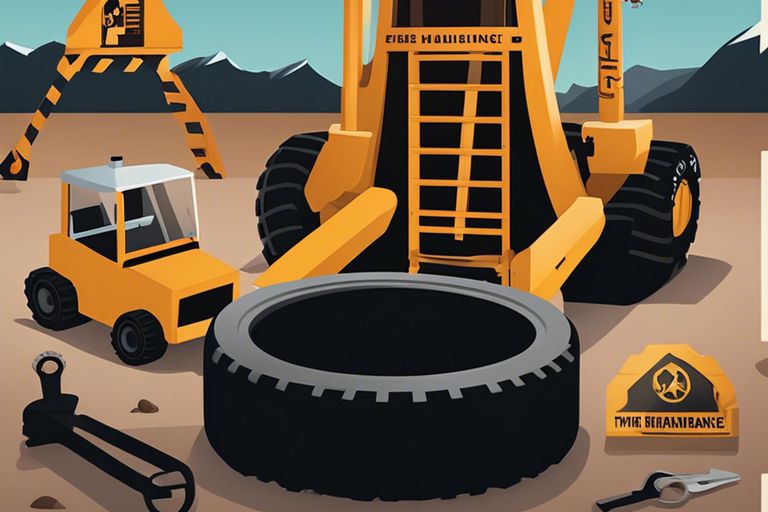
Data-driven maintenance approaches
Despite the harsh conditions that off-the-road (OTR) tires endure, their lifespan can be significantly extended with expert maintenance. Using data-driven maintenance approaches is key to optimizing the performance and longevity of OTR tires.
Using telematics and tire monitoring systems
One of the most effective ways to improve OTR tire maintenance is through the use of telematics and tire monitoring systems. These advanced technologies provide real-time data on tire pressure, temperature, tread depth and overall performance, allowing drivers to do just that proactive identify problems before they escalate.
Operators can do this by using telematics and tire monitoring systems reduce significantly the risk of unexpected tire failure, improving operational efficiency, and maximize extend the life of OTR tires by ensuring they are properly inflated and aligned at all times.
Analyze maintenance data to predict and prevent tire problems
Using historical maintenance data to predict and prevent tire problems is another story necessary part of data-driven maintenance for earth-moving tires. By analyzing past maintenance data, operators can identify patterns, trends and potential areas of concern so they can respond accordingly preventive measures to prevent expensive tire replacements and downtime.
Maintenance data can provide valuable insights into tire performance, maintenance schedules and potential wear patterns, allowing operators to proactive address problems and implement targeted maintenance strategies extend the lifespan of earth-mover tires.
1. Inspect the tires regularly for signs of wear and damage.
2. Ensure correct tire pressure according to manufacturer's guidelines.
3. Rotate tires regularly to promote even wear and longevity.
4. Keep tires clean to prevent dirt build-up and damage.
5. Avoid overloading vehicles to reduce tire pressure.
6. Consult tire experts for professional guidance and assistance.
Conclusion
Overall, implementing expert maintenance advice is crucial to extending the life of OTR tires. By following industry best practices, such as maintaining proper tire pressure, managing payloads, performing regular inspections and practicing safe driving habits, you can maximize the durability and performance of your OTR tires. Remember, a proactive approach to maintenance will not only save you money in the long run, but also ensure the safety of your vehicle and its passengers.
FAQ
Question: Why is it important to extend the life of OTR tires?
A: Extending the life of Off-The-Road (OTR) tires is critical because these tires represent a significant investment for heavy equipment operators. By maximizing service life, operators can reduce operating costs and downtime, ultimately increasing productivity.
Q: What are some expert maintenance tips to extend the life of OTR tires?
A: Regularly checking and maintaining proper tire pressure, performing regular tire inspections for signs of damage or wear, ensuring proper wheel alignment, rotating tires at recommended intervals, and storing properly when not in use. in use are all essential maintenance practices to extend the life of OTR tires.
Question: How can proper maintenance of OTR tires improve safety and performance on job sites?
A: Proper maintenance of OTR tires not only extends their life, but also improves safety and performance on job sites. Properly maintained tires reduce the risk of blowouts, flat tires and other tire-related incidents, ensuring a safer work environment. Additionally, properly maintained tires help maintain optimal traction, fuel efficiency and overall equipment performance.
